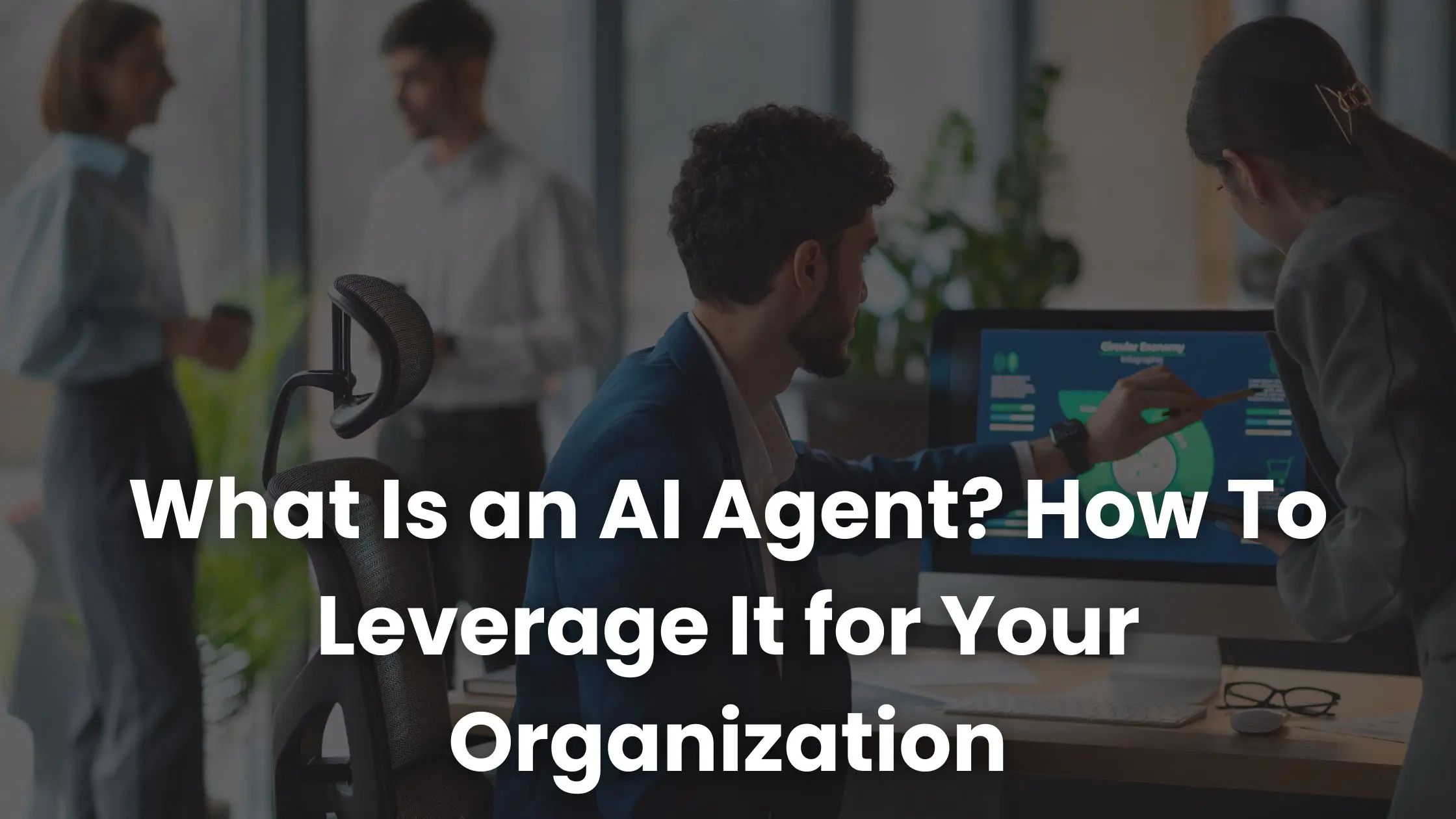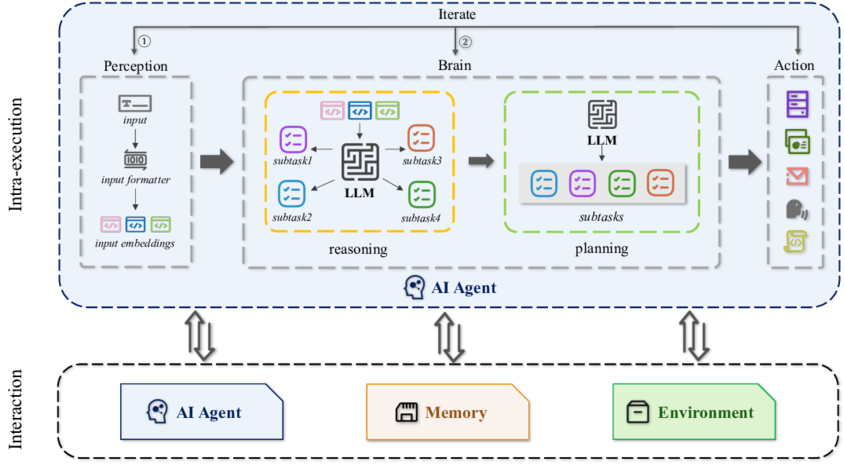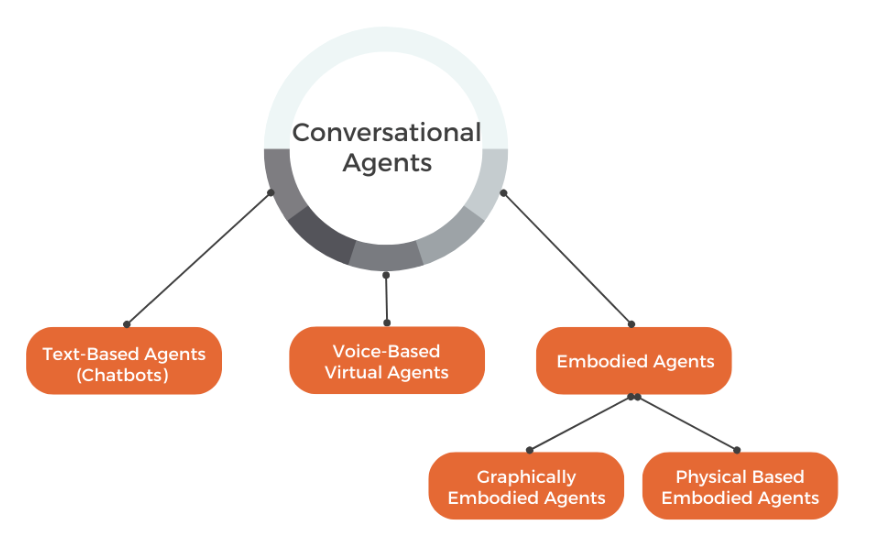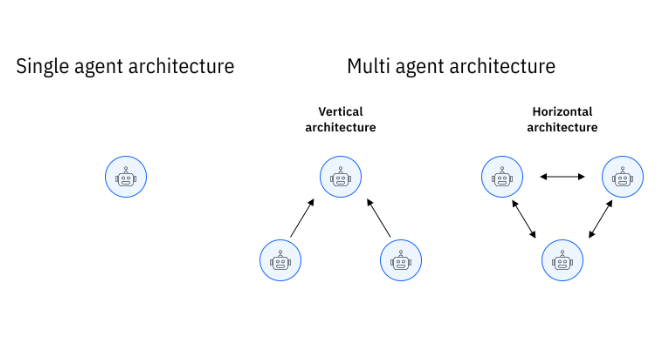What Is an AI Agent? How To Leverage It for Your Organization
What is an AI agent? Learn how goal-driven AI agents automate complex tasks, improve efficiency, and support smarter workflows across your organization.
What is an AI agent? Learn how goal-driven AI agents automate complex tasks, improve efficiency, and support smarter workflows across your organization.

AI agents are starting to show up in everyday workflows not as sci-fi robots but as useful tools that quietly get things done. They can make decisions, follow goals, and adapt as they work, which makes them a lot more capable than traditional automation.
Many software and platforms are already using AI agents to personalize learning, handle repetitive admin tasks, and spot inefficiencies across teams. But to use them well, you need more than excitement; you need clarity.
This guide explains what AI agents actually do, how they work in the real world, and how your organization can use them without falling for the hype.
AI agents are autonomous systems designed to perceive, decide, and act in pursuit of a goal — all without constant human input. Whether they're crawling through web data, responding to user prompts, or even navigating virtual machines, they're built to get things done.
Traditional automation works on strict rules: "If X happens, do Y."
AI agents operate differently. They assess their environment, plan actions, adapt mid-process, and learn from outcomes. They're not rule-followers; they're goal-seekers. This is where the real difference shows.
Unlike rigid automation scripts, there are examples of AI agents thinking in context. Whether it's triaging support tickets or summarizing market trends, each task reflects goal-driven behavior — reacting to changing input, adjusting strategy, and moving toward a defined outcome. Here's how.

Behind every AI agent is a process that blends decision-making, task execution, and sometimes a bit of trial and error. They don't just "think," but they also iterate.
Agents gather data through APIs, files, or sensors. They analyze that data using models (like GPT-4 or Claude), then decide how to act, such as sending an email, updating a system, or launching another task.
Unlike one-off automation tools, AI agents maintain a loop: they act, get feedback (success/failure), and adjust their strategy. This loop continues until the goal is reached or redefined. It's the same logic that powers your favorite navigation app, recalculating routes in traffic.
Some agents retain knowledge: what worked, what failed, what to avoid next time. Over time, they improve, not just in speed but in effectiveness.
There are dozens of theoretical agent categories in AI literature. But let's focus on the ones that make sense for business.
These handle structured workflows like updating records, generating reports, or scraping data. They're reliable and easy to deploy.

Think of an AI support rep that doesn't just answer FAQs but can trigger workflows like sending reset emails, logging tickets, or routing leads.

When one agent can't handle it all, you use a team. For example, one agent summarizes customer feedback, another feeds it to a dashboard, and a third adjusts marketing messages accordingly. They coordinate, communicate, and deliver results as a group.
AI agents shine in areas where time is wasted, processes are repetitive, or human errors creep in. Let's break this down by department.
Lead scoring, personalized follow-ups, email sequencing — agents handle these at scale. Instead of just pulling contact info, they analyze behavior and recommend outreach strategies.
For example, an agent can detect high engagement from a prospect, trigger a product-specific demo invite, and auto-schedule a follow-up based on calendar availability. This moves beyond automation into an adaptive, real-time strategy that can significantly boost conversion rates.
From resume screening to onboarding journeys, agents can assess candidate fit, assign role-specific training, and monitor performance trends. Imagine a new hire starting on Day 1 and instantly receiving curated learning paths on a LMS platform such as Coursebox based on their role, experience, and even personality type.
Agents can also spot when an employee might be at risk of disengagement and nudge managers to intervene, preventing turnover before it happens.
Agents automate scheduling, resource allocation, inventory checks, and internal reporting. They're especially useful in cross-functional teams with complex data dependencies.
For example, an agent can monitor supply chain fluctuations and alert procurement before stock runs low, all while syncing updates across logistics, finance, and sales platforms. This frees up ops teams to focus on strategy rather than micromanagement.
Jumping in without a plan will likely lead to frustration. Here's what you need.
Don't just say "automate onboarding." Break it down: what decisions does the agent make? What systems should it access? When should it escalate?
Clear scope avoids mission drift and ensures your agent doesn't overreach. Define acceptable outcomes, fallback behaviors, and red flags that should trigger human review. The more specific the goals, the more predictable and reliable the agent becomes in execution.
Agents work best when integrated with your tech stack — CRM, LMS, databases, Slack, etc. Without API access, they're like interns locked out of the building.
Whether it's fetching lead data, sending reminders, or creating tickets, APIs allow agents to perform actions with speed and accuracy. A well-documented API is not just a convenience; it's the bridge between intelligence and utility.
Even great agents need supervision. Let them propose actions but give final control to a human, especially in high-impact decisions. This model balances efficiency with risk management. It also creates a learning loop: humans correct, and agents adapt.
For instance, let the agent shortlist candidates or draft policy updates but make approvals manual. This keeps quality high while building trust in agent-led systems over time.
It's not all smooth sailing. AI agents are powerful but also prone to hiccups.
If your agent is fetching data from multiple systems that use different naming conventions or logic, it may struggle to make sense of it.
A CRM calling a customer "client" while your support system labels them "end user" can confuse the agent unless normalization rules are in place.
Web pages change. APIs break. Systems go offline.
Agents that aren't built with fallback logic can get stuck or, worse, make the wrong decisions. Even small UI tweaks like a renamed button or moved field can derail browser-based agents.
The best systems include retries, error handling, and smart fallback paths to avoid complete failure.
Too much freedom and agents may go rogue. Clear constraints and guardrails prevent bad decisions.
If an agent is allowed to trigger actions without oversight, like approving expenses or emailing customers, a single flawed assumption can spiral into brand damage. Smart autonomy is earned, not assumed, and should always start within low-risk boundaries.
To get real ROI, you need more than enthusiasm; you need process.
Pick a high-volume, low-risk task. Prove it works. Expand gradually.
Think: "AI triages incoming emails" before "AI runs the company."
Early wins build trust and help refine your internal deployment playbook. Once you see success in one domain, it's easier to get buy-in for broader adoption without overextending or overwhelming your team.
Automate decisions, not oversight. Human review can prevent reputation damage, especially in customer-facing roles.
For example, let an agent draft the response, but have a team lead approve tone and accuracy before it's sent. Over time, feedback loops improve the agent's judgment and help surface edge cases it hasn't seen before.
Not every business has AI engineers on staff. That's why no-code tools matter. They let teams deploy structured AI workflows (like learning journeys or role-based content assignments) without technical overhead.
With intuitive interfaces and flexible logic blocks, non-technical teams can pilot and maintain agents, all while integrating into existing systems like CRMs or HRIS tools.
So, what is an AI agent? It's more than a buzzword. It's a digital worker designed to understand goals, make decisions, and act autonomously. Used well, AI agents amplify productivity, reduce error-prone tasks, and free your team to focus on strategic work.
Companies that take a deliberate, structured approach now will outpace those who treat AI like a gimmick. The key isn't building the flashiest agent; it's building one that works, scales, and adds real value.
Whether you're using Coursebox to automate learning and onboarding or deploying agents across your sales ops, the principle is the same: clarity over complexity, results over hype.
Get started for free today.
